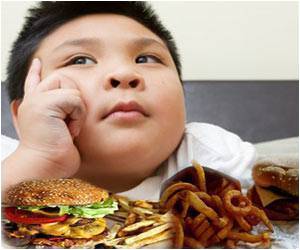A defective protein is responsible for a rare, lethal childhood disease known as Giant Axonal Neuropathy.

In GAN patients, nerve cells are swollen with massive build-ups of structures called intermediate filaments, cytoskeletal components that give cells their shape and mechanical properties. Goldman's team found that gigaxonin, a protein encoded by the gene involved in GAN, regulates normal turnover of the protein building blocks that form a cell's intermediate filaments. Mutations in this gene result in the malfunctioning of gigaxonin, which leads to the abnormal build-up of intermediate filaments and eventually disrupts the normal functioning of nerve cells.
"This important new research pinpoints the mechanism that allows intermediate filaments to rapidly build up in GAN patients," says Robert Goldman, chair of the department of cell and molecular biology at Northwestern University Feinberg School of Medicine. Goldman has studied the structural proteins of cells for more than 30 years.
"This is a huge step forward for GAN research," said Lori Sames, co-founder and CEO of Hannah's Hope Fund, the leading GAN disease organization. "GAN is juvenile ALS, but even worse. Not only do motor neurons die out, so do the sensory neurons. To find a medicinal therapy, you really need to know what mechanism to target. And thanks to Dr. Goldman's work, now we do."
To identify gigaxonin's role, scientists used cells known as fibroblasts obtained from skin biopsies of children with GAN. The cells were then grown in lab cultures, and they also contained large abnormal aggregates of intermediate filaments. When scientists introduced healthy gigaxonin genes into both control and patient fibroblasts, the results were dramatic. The abnormal aggregates of intermediate filaments disappeared. However, the cytoskeleton's two other major systems, microtubules and actin filaments were not affected by this treatment.
The study's lead author, Northwestern University postdoctoral fellow Saleemulla Mahammad, stressed that this discovery may also have implications for more common types of neurodegenerative diseases that are also characterized by large accumulations of intermediate filament proteins, including Alzheimer's disease and Parkinson's disease.
Advertisement
Mahammad and other members of the Goldman Laboratory collaborated with Puneet Opal, M.D., associate professor in the Ken and Ruth Davee department of neurology and cell and molecular biology, along with researchers in the laboratory of Pascale Bomont, at the INSERM neurological institute in Montpelier, France, and the laboratory of Jean-Pierre Julien at the Université Laval in Quebec, Canada.
Advertisement
Source-Eurekalert










